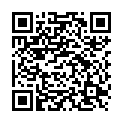|
|
|
| Module code: E929 |
|
2V+2P (4 hours per week) |
|
5 |
| Semester: 9 |
| Mandatory course: no |
Language of instruction:
German |
Assessment:
Written examination
[updated 13.03.2010]
|
E929 Electrical Engineering, Master, ASPO 01.10.2005
, semester 9, optional course
|
60 class hours (= 45 clock hours) over a 15-week period.
The total student study time is 150 hours (equivalent to 5 ECTS credits).
There are therefore 105 hours available for class preparation and follow-up work and exam preparation.
|
Recommended prerequisites (modules):
None.
|
Recommended as prerequisite for:
|
Module coordinator:
Prof. Dr. Reinhard Brocks |
Lecturer:
Prof. Dr. Reinhard Brocks
[updated 13.03.2010]
|
Learning outcomes:
Students will acquire an understanding of how communication protocols function. They will be able to specify services and protocols using formal descriptive languages and will be able to deploy protocol development tools.
[updated 13.03.2010]
|
Module content:
- The principles of communication protocols, communication instances and how they
function
- Abstract Syntax Notation One (ASN.1): Abstract, concrete and transfer syntax,
presentation context, OBJECT IDENTIFIER, module structure, simple and compound
types, tagging, BER encoding rules
- Specification and Description Language (SDL): Agents, process specifications,
sending and receiving signals, timers, procedures
- Message Sequence Chart (MSC): Basic language constructs (Frame, Instance,
Message, Condition, Action, Timer, Create), structural language constructs
(Coregion, Decomposition, References, Inline expressions, High-level MSC)
- Tree and Tabular Combined Notation (TTCN-3): Protocol development, protocol
testing
[updated 13.03.2010]
|
Teaching methods/Media:
Lecture notes, tools that use formal description languages
[updated 13.03.2010]
|
Recommended or required reading:
Textbooks
König, Hartmut: Protocol Engineering, Teubner 2003, ISBN 3-519-00454-2
Specialist literature
Olivier Dubuisson: ASN.1, Communication between heterogenous Systems, Morgan Kaufmann, 2001, ISBN 0-12-633361-0, http://asn1.elibel.tm.fr/en/book/
Ellsberger, Hogrefe, Sarmen: SDL: Formal Object-Oriented Language for Communicating Systems, 1997
Mitschele-Thiel: Systems Engineering with SDL, John Wiley & Sons, 2001
Specifications
ITU-T Recommendation Z.120: Message Sequence Charts (MSC), 1999, http://www.itu.int
ITU-T Recommendation Z.100: Specification and Description Language SDL, 2000 www.itu.int/itudoc/itu-t/approved/z/index.html
Websites
http://asn1.elibel.tm.fr/: ASN.1 information site
http://www.sdl-forum.org/: SDL Forum Society
http://www.iec.org/
http://www.itu.org
http://www.oss.com/
[updated 13.03.2010]
|


